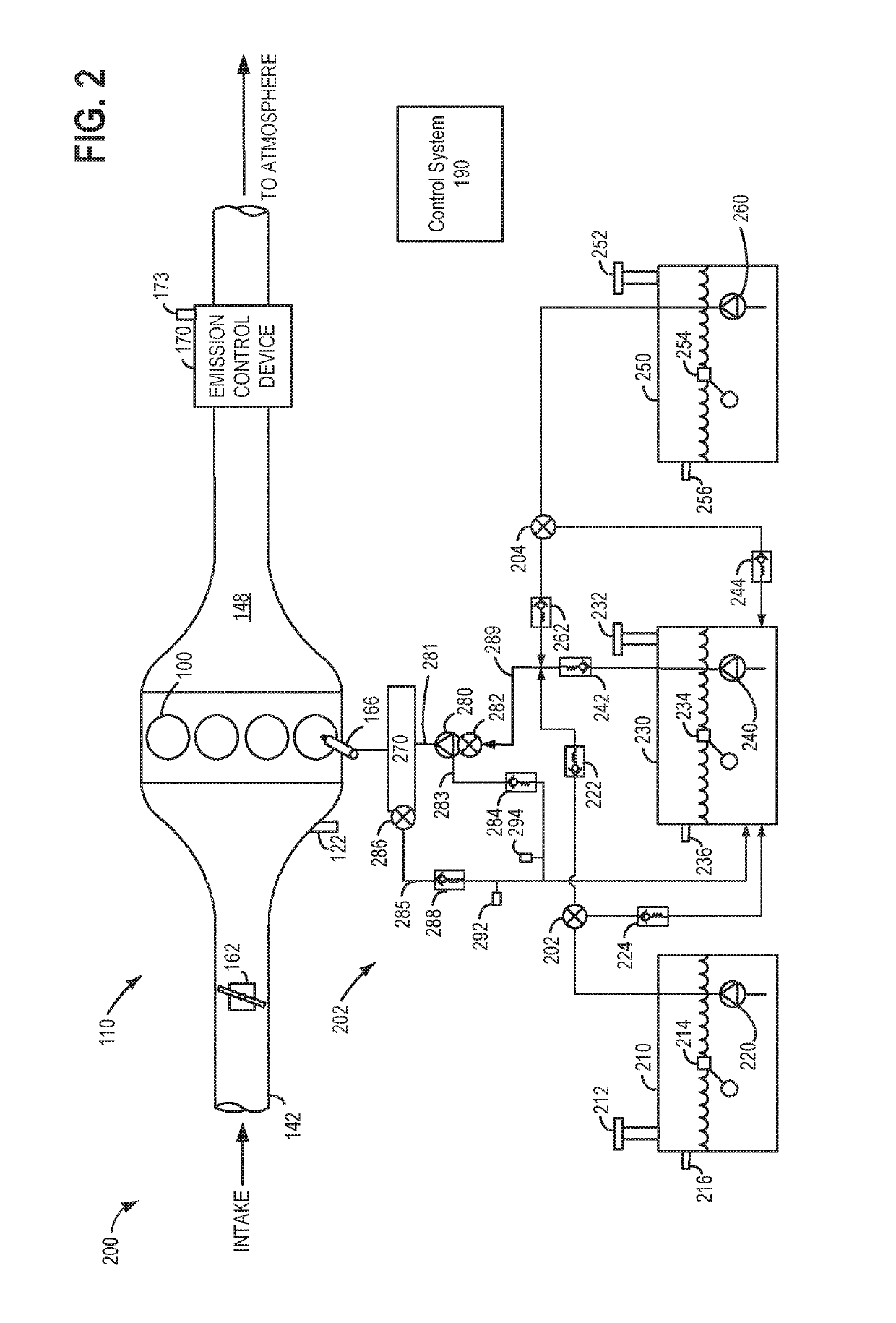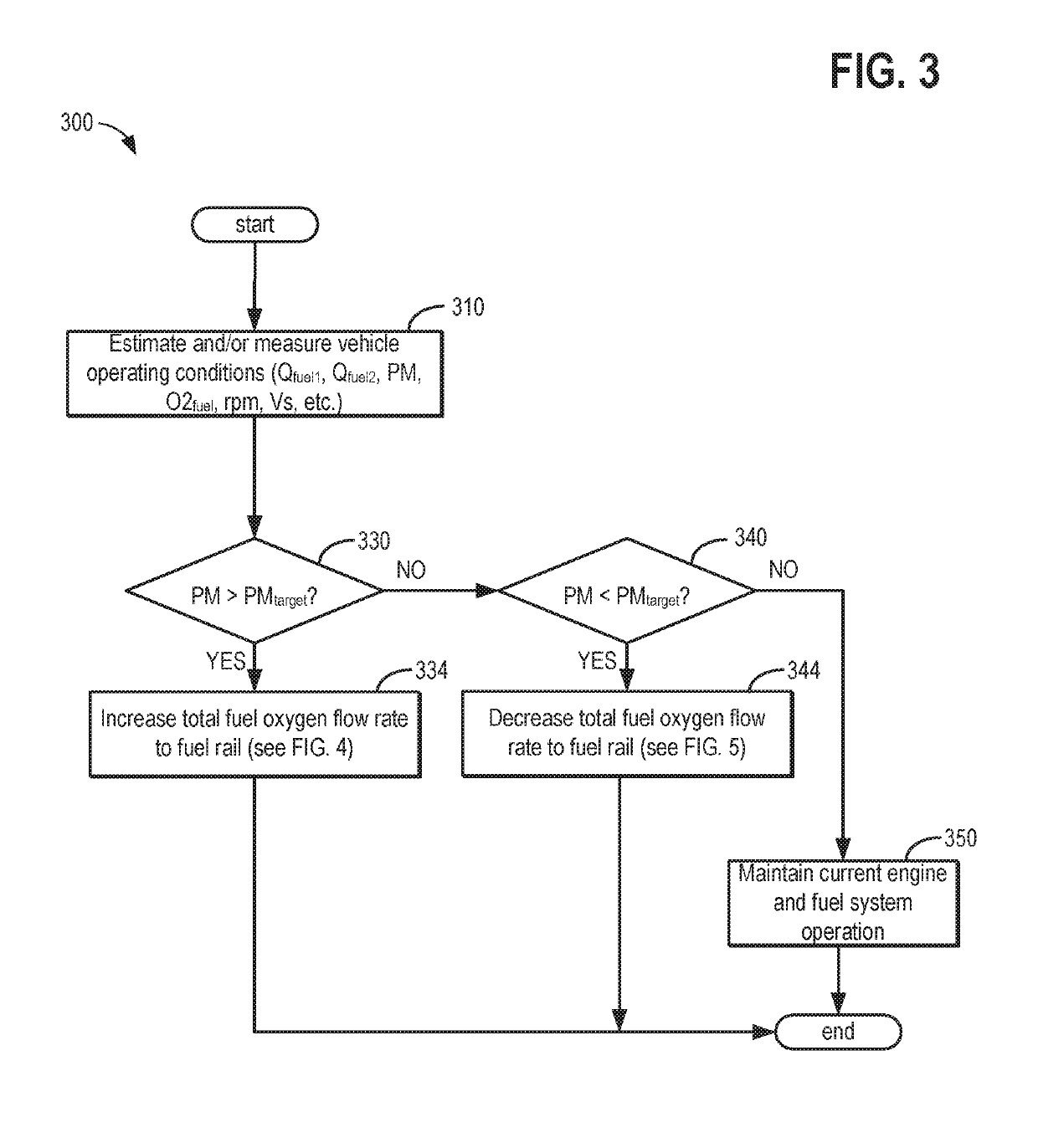System and methods for reducing particulate matter emissions
a technology of particulate matter and system, applied in the direction of machines/engines, output power, electric control, etc., can solve the problems of increasing the cost of the drivetrain, and unnecessarily reducing the fuel economy of the engine operating, so as to reduce the emission of soot and other particulate matter (pm), increasing the complexity of the drivetrain, and reducing the engine performance and fuel economy
- Summary
- Abstract
- Description
- Claims
- Application Information
AI Technical Summary
Benefits of technology
Problems solved by technology
Method used
Image
Examples
Embodiment Construction
[0013]This detailed description relates to systems and methods for reducing particulate matter (PM) emissions from a vehicle combustion engine, such as the engine of FIG. 1. In response to a PM level deviating from a target PM level in the engine, fuel oxygen content delivered to the engine from the fuel system shown in FIG. 2 may be adjusted. In particular, a controller may perform executable instructions, as shown in the flow charts of FIGS. 3-6, to adjust the fuel oxygen content delivered to the engine responsive to a PM level deviating from the target PM level. Furthermore, the controller may perform executable instructions, as shown in the flow chart of FIGS. 3-6, to open of one or more of a volume control valve (VCV) and a pressure control valve (PCV) responsive to the exhaust PM deviating from the target PM, and responsive to the fuel oxygen content deviating from a target fuel oxygen content. As shown in the fuel system of the engine in FIG. 2, the VCV may be positioned at a...
PUM
 Login to View More
Login to View More Abstract
Description
Claims
Application Information
 Login to View More
Login to View More - R&D
- Intellectual Property
- Life Sciences
- Materials
- Tech Scout
- Unparalleled Data Quality
- Higher Quality Content
- 60% Fewer Hallucinations
Browse by: Latest US Patents, China's latest patents, Technical Efficacy Thesaurus, Application Domain, Technology Topic, Popular Technical Reports.
© 2025 PatSnap. All rights reserved.Legal|Privacy policy|Modern Slavery Act Transparency Statement|Sitemap|About US| Contact US: help@patsnap.com



